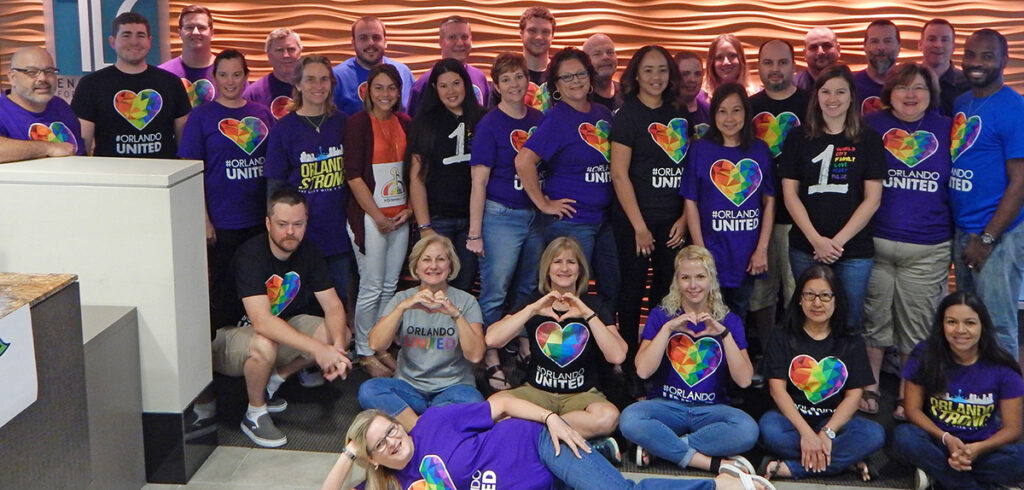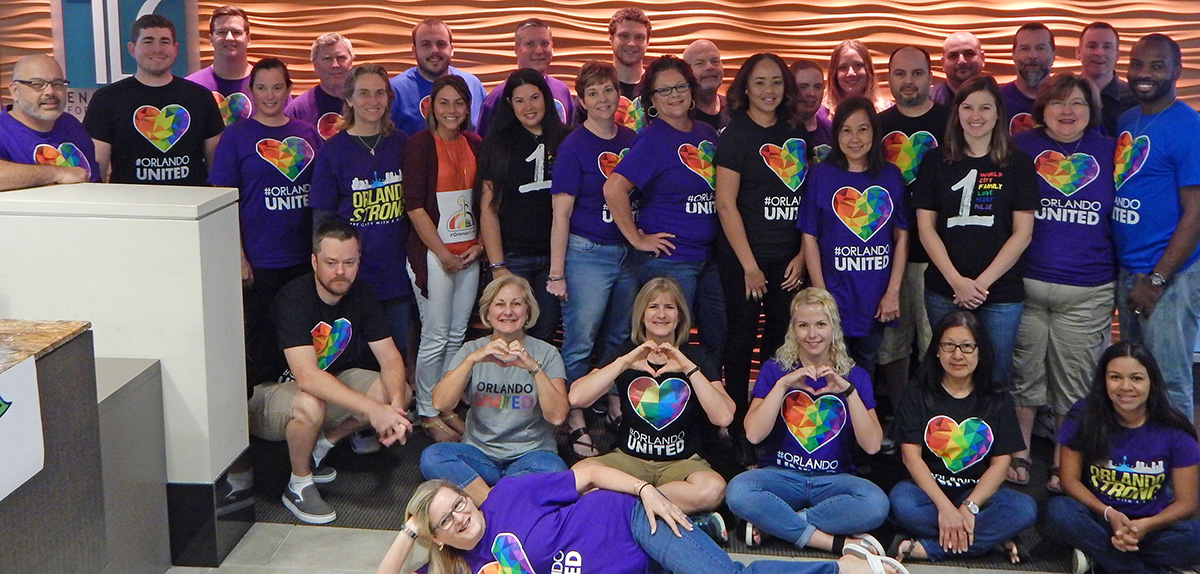TLC Engineering for Architecture is a dynamic building systems engineering firm with a diversity of talent, expertise and skill to deliver design projects that span the major markets and around the world. With more than 60 years of experience, multiple offices, a commitment to sustainable design and an enthusiastic embrace of leading-edge technology, TLC ranks among the largest and most respected engineering firms in the nation.
Employee Response
HOW HAVE THE EMPLOYEES RESPONDED TO THE JUST PROGRAM AND THE WILLINGNESS OF THE FIRM TO DEMONSTRATE TRANSPARENCY ON THESE SENSITIVE ISSUES? HAS THIS PROCESS AND JOURNEY HELPED ELEVATE EMPLOYEE ENGAGEMENT LEVELS?
During the JUST documentation process, it came to light that the company was not doing as well as we thought we were with gender equity issues. Even before we submitted our documentation for review, we started working on these issues. The most significant outcome has been to engage a focus group and initiative on women at TLC, empowering our staff to take a critical look at the reasons why we weren’t meeting our own gender equity expectations, and to make specific recommendations to our management to help close these gaps.
Key Benefits
WHAT DO YOU THINK ARE THE MOST VALUABLE BENEFITS TO ANY ORGANIZATION PURSUING THE JUST LABEL?
There are obvious benefits in terms of strategic positioning in the marketplace:
- The requirements of several high performance building rating systems (Living Building, LEED v4, and WELL) reward a firm that has the JUST label. This helps the firm differentiate itself in competing for these commissions.
- The JUST label and its indicators are recognized by qualified job applicants, and will help them find TLC as they seek out opportunities with firms that have a commitment to social equity. A racially and gender diverse workforce has been shown to correlate strongly with firm profitability and growth.
- We believe that our commitment to transparency, both in terms of our internal financial reporting, as well as our employment and community engagement policies, helps us not only attract great employees, but to hold onto the ones that we have.
- The employee engagement that is engendered through transparency generates a strong culture for continuous improvement that ripples through the organization, moving social equity indicators, as well as important business indicators like revenue growth and profitability.
Leveraging the Label
IN WHAT WAYS ARE YOU LEVERAGING THE JUST LABEL? ARE YOU USING JUST IN YOUR SUSTAINABILITY REPORTING, BLOG ARTICLES, SOCIAL MEDIA OR CORPORATE COMMUNICATIONS?
Since we are relatively new in the journey as a JUST organization, the firm has not leveraged the label as much as we might have. Our most significant and visible use of the label is in our talent recruiting program. The materials that are generated in our workforce development programs, from e-mails to signage at job fairs, all feature the JUST label. The firm has featured JUST label recognition on the home page of our website. In addition, the firm has begun to include the JUST logo in our marketing materials.
Advice for Prospects
WHAT ADVICE WOULD YOU GIVE PROSPECTIVE JUST ORGANIZATIONS?
Becoming a JUST organization requires leadership from the firm’s management. While the idea for having a firm earn its JUST Label may originate among the rank-and-file, since the JUST label is so centrally linked to a firm’s culture, senior management needs to be committed, to the point of spending at least a small part of the firm’s time and resources on the process. In TLC’s case, the impetus originated with one of the firm’s directors, so this step was fairly easy for us, but shouldn’t be taken for granted. Every new initiative, especially one that goes to a firm’s culture, needs at least one strong, dedicated champion in a position of some authority, with the ability to marshal the firm’s resources and persuade any key staff that might not initially go along with this transparency initiative.
Participation and support of your human resources department is important. Some of the information for the JUST discovery process, especially around salaries and benefits, is especially sensitive and should be kept personal and company confidential. In our organization, individual-specific salary and benefit information is handled by trusted human resources staff. JUST does not require disclosure of data at the individual level, but this data is used to aggregate to quantify performance for some indicators such as gender pay equity.
The documentation required for JUST can be time consuming to acquire and process. While the data that JUST needs to demonstrate performance in each of the indicators is generally available, it can be hard to put into the format required by JUST, and is in the hands of parts of the organization (like finance and human resources) that have plenty of other work to do. We recommend that JUST Program champions spend some time with these departments early in the process to help them understand the JUST process, the business benefits and overview of documentation requirements before you ask for the data.
Lessons Learned
WHAT ARE SOME OF THE MOST IMPORTANT LESSONS LEARNED ABOUT YOUR ORGANIZATION AS A RESULT OF THE JUST APPLICATION PROCESS?
The firm learned we aren’t doing as well on some important indicators, especially gender equity, as we thought we were. Until we did the work of gathering the data and comparing our performance against the JUST benchmarks, we simply didn’t know. We had been telling ourselves that we are committed to being the employer of choice in our markets, but we just didn’t have the JUST vocabulary to put that in real, quantifiable terms.
We learned that our firm’s established tradition of transparency, at least in terms of the frequent and regular internal disclosure of financial information on both the individual operating unit and firm-wide levels, was relatively easy to extend into the sphere of employment policy. The JUST label has just been another positive step on a regular path for us.
Changes in Policy
CAN YOU DESCRIBE SOME OF THE MOST CONSEQUENTIAL CHANGES TO ORGANIZATIONAL POLICIES AND PRACTICES AS A RESULT OF JUST?
The most consequential change was the commitment to a living wage. The firm was unaware of the MIT Living Wage Calculator framework that had established validated community-specific living wage thresholds for working families. We took it for granted that, as a professional services firm, that all our employees were being paid at least a living wage. During the data gathering phase, we discovered that we had a few employees that were being paid slightly below the threshold, and we took immediate action to raise their salaries, even before we had all the data collected for submission. We have also, based on the information we collected about gender pay equity, formed a focus group and initiative to determine the causes for gender pay inequity and take measures to close the gap in some of our salary categories.
What Worked Well
ARE THERE SPECIFIC POLICY CHANGES THAT HAVE BEEN PARTICULARLY WELL RECEIVED? PLEASE DESCRIBE.
The firm instituted very few policy changes (mostly formalizing policies around established practice) as a result of the JUST process. TLC’s work on Gender Equity has actually had a life of its own and isn’t generally perceived to have come out of the JUST program work.
Management Tool
PLEASE DESCRIBE HOW THE FIRM INTENDS TO USE JUST AS A MANAGEMENT TOOL AND FRAMEWORK MOVING FORWARD.
The firm intends to take steps to improve our performance on a number of our JUST indicators that are below the ratings that we think we are capable of achieving. We look at JUST as a “best practices” guide in the field of employment practice and community support and engagement and will use it to guide the further development and improvement of our performance in those indicators.


